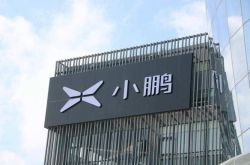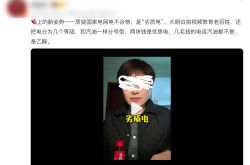Tencent's AI Vision: A Measured Ambition
![]() 08/07 2025
08/07 2025
![]() 685
685
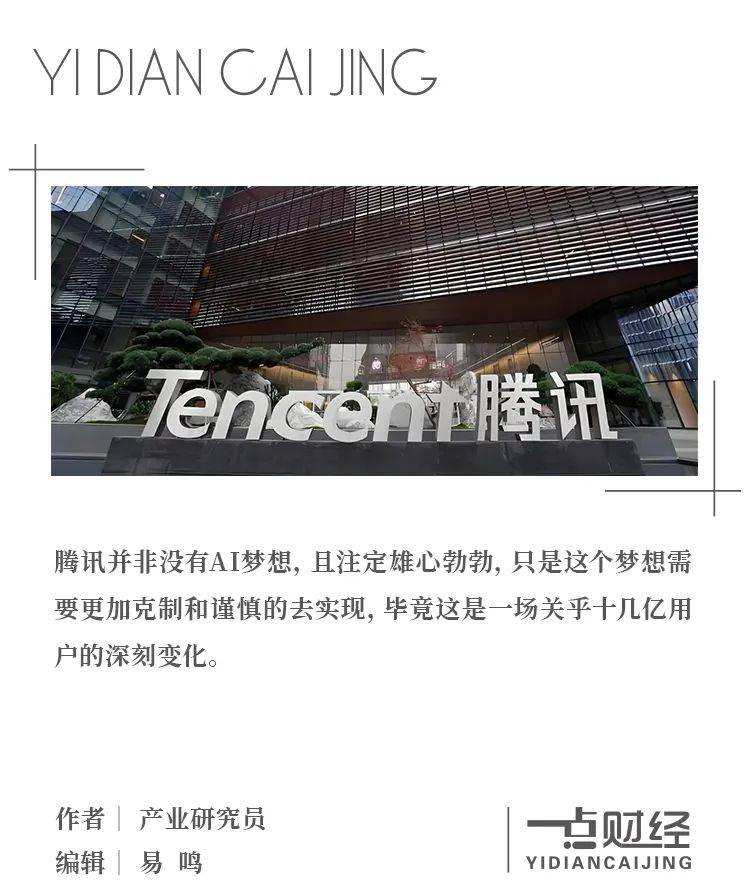
Amidst the surge of artificial intelligence reshaping the global technology landscape, Tencent's approach appears notably reserved.
While competitors like Baidu's ERNIE Bot and Alibaba's Tongyi Qianwen have secured market advantages, and ByteDance's Doubao has surged ahead in monthly active users, Tencent's Hunyuan model remains relatively overshadowed. Hunyuan's quiet development path has inevitably sparked questions in the market: With WeChat, a super-traffic portal, at its disposal, where lies Tencent's AI dream? Senior management must have deliberated extensively, as this strategic decision will determine the company's ability to navigate industry cycles.
"We cannot underestimate Tencent's strength," remarked a seasoned Silicon Valley investor. In the latter half of the AI era, where scenarios reign supreme, Tencent's scenario ecosystem, epitomized by WeChat, holds a pivotal position nationally and globally. "WeChat's actions cannot be overly aggressive; otherwise, it risks causing issues," cautioned an industry insider, given the multitude of factors involved.
Reviewing WeChat's past endeavors, its product philosophy has consistently emphasized restraint. From its origins as a pure communication tool to the gradual addition of features like Moments, Official Accounts, and Mini Programs, every expansion of WeChat has been meticulously considered to avoid feature overload that could degrade user experience. Yet, when it comes to change, it must be thorough and astonishing; there can be no room for error.
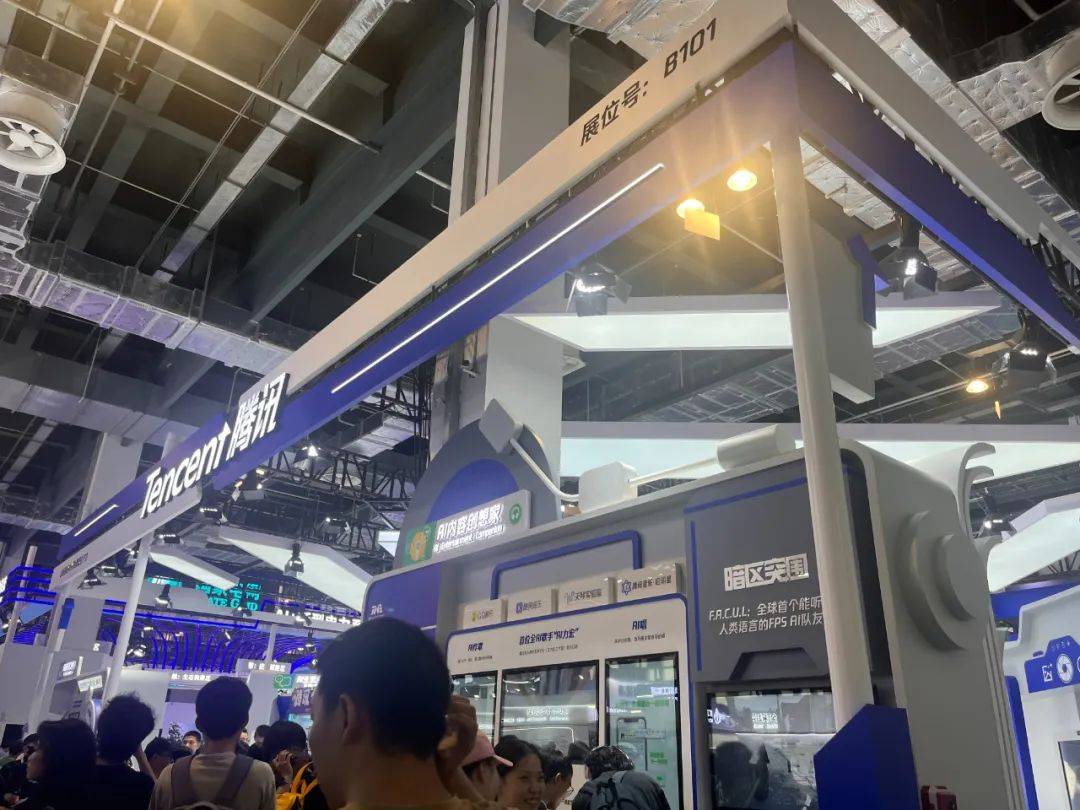 △Tencent's booth at WAIC
△Tencent's booth at WAIC
At least for now, Tencent has yet to reveal its trump card in AI. We endeavor to glimpse its AI strategy through Tencent's seemingly "slow" AI moves.

Tencent's seemingly "behind-the-curve" steps in AI
Historically, Tencent has appeared relatively muted in the core race for AI large models.
In early 2025, the DeepSeek-R1 large model emerged with its innovative architecture and training methods, demonstrating excellence in core capabilities such as content understanding and text generation, even approaching the top international level, instantly capturing market attention and rendering other contemporary AI large models pale in comparison.
Tencent became the first among technology giants to integrate DeepSeek. While this move enhanced user experience, it also served as a mirror, clearly reflecting Tencent's lagging position in the core technology competition for its self-developed large models. The Tencent product that was first to integrate DeepSeek was not WeChat, despite its vast scenarios, users, costs, high usage frequency, and status as a super-traffic portal, but rather Tencent Yuanbao.
Examining the performance of Tencent's main competitors, Alibaba Cloud's "Tongyi Qianwen-Max" scored high marks in multiple mainstream model evaluations, ranking seventh globally and winning the title for non-inferential Chinese large models; ByteDance's "Doubao" distinguished itself with significant cost-effectiveness advantages, hailed as the "king of cost-effectiveness" – its information processing cost (Token cost) is only one-fifth of the industry average, coupled with lightweight deployment characteristics requiring lower hardware configuration requirements, making it popular among small and medium developers.
While Tencent has also accelerated Hunyuan's iterations, its overall capabilities still pale in comparison to its competitors. Moreover, the strong intervention of DeepSeek disrupted Hunyuan's development rhythm, causing Hunyuan to lose focus and placing Tencent's AI in an increasingly passive position.
Faced with the pressure of general models, Tencent adopted a different approach, seeking breakthroughs in vertical fields such as 3D generation.
In November 2024, Tencent open-sourced the Hunyuan 3D model, becoming the world's first open-source large model supporting the generation of 3D content from text and images, garnering some attention. This route was ingeniously taken, avoiding direct competition with other giants, but it could not compensate for Tencent's overall weakness in the research and development of general large models.
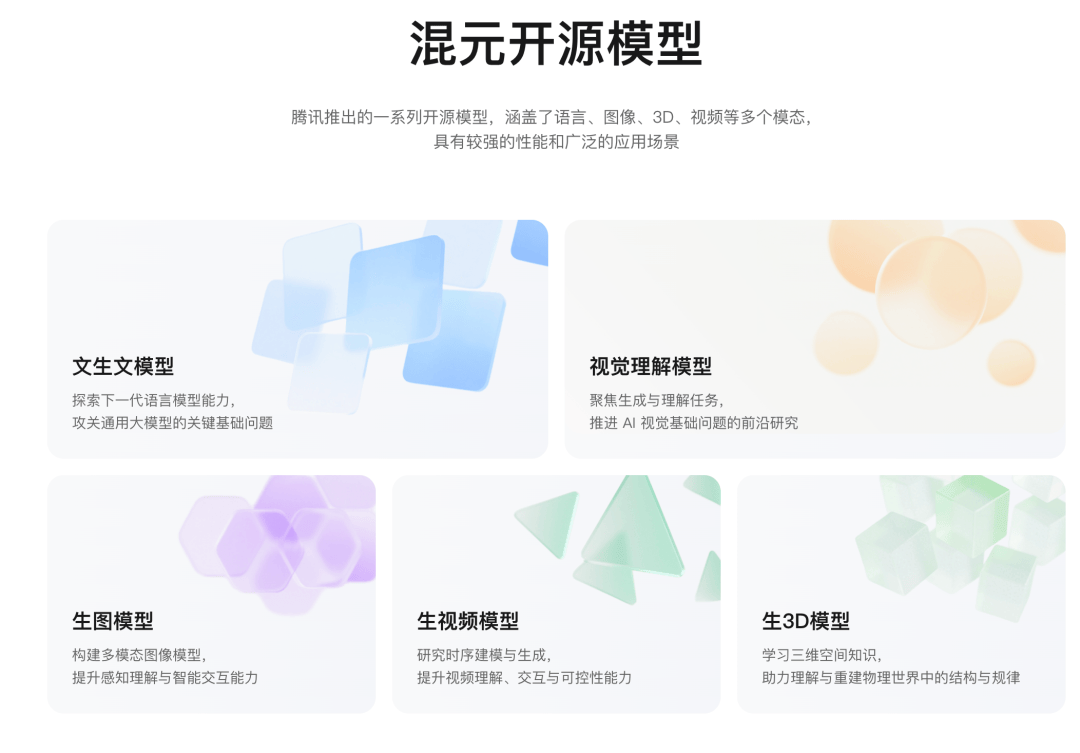 △Tencent Hunyuan's open-source model Image source: Tencent Hunyuan official website
△Tencent Hunyuan's open-source model Image source: Tencent Hunyuan official website
Hunyuan's struggles reflect Tencent's "behind-the-curve" position in the competition for AI core technologies.
And what of WeChat?
At that time, WeChat added AI search functionality to its "Search" feature, which seemed more like a fleeting experiment. It was as if something was done, yet nothing substantial was achieved. WeChat and Tencent's Hunyuan appeared as two separate entities.

Mismatch under high investment – Is Tencent still at the AI table?
Has Tencent abandoned its AI dream? The answer is unequivocally no.
No technology giant dares to overlook AI technology, which determines the future. Tencent's substantial investments are testament to this.
Data reveals that Tencent's R&D investment reached 70.69 billion yuan in 2024, with cumulative investments exceeding 340.3 billion yuan over the past seven years. In 2025, rumors circulated that Tencent plans to invest hundreds of billions of yuan, focusing on procuring AI computing power chips (GPUs), large model training, and cloud business expansion. Tencent also confirmed that it has sufficient high-end chip reserves to ensure the continuous training of multiple generations of large models. Furthermore, Tencent invested in the AI chip company Suiyuan Technology in 2018, deeply integrating with the Tencent Cloud ecosystem.
However, compared to industry giants, Tencent's actual AI achievements and presence are indeed not prominent, presenting a contrast of "high input, low output".
While Alibaba actively expands in the cloud computing market with Tongyi Qianwen, and ByteDance adheres to its self-developed route, focusing on Doubao in education, tourism, and other scenarios, Tencent has yet to launch an AI product on the C-end that ignites public discourse and becomes a phenomenal "killer" product akin to OpenAI's ChatGPT.
Compared to its peers, Tencent's investment scale in the AI field does not seem to match its market position.
In the AI era, efficient mobilization capabilities are emphasized. Zuckerberg personally recruited in Silicon Valley, and Meta, which was originally decentralized, readjusted its organizational structure and amplified the founder's voice. Startups that iterate rapidly and efficiently often take the founder's personal will as an important criterion for action, as this era prioritizes efficient iteration and speed. Tencent's decentralized management and fragmentation seem out of place in the AI era.
From Tencent's internal perspective, at least compared to WeChat, Tencent Yuanbao's position appears much weaker. However, WeChat has not yet embraced more AI features in today's era. From the outside, it seems that WeChat, with its vast user base and scenarios deeply embedded in the daily lives of Chinese people, is still maintaining the status quo.
Of course, no one dares to claim victory in the AI battle yet. AI technology iterates rapidly, and today's leader may face technical bottlenecks or new challenges tomorrow. In this era, leading enterprises across various industries constantly fear a replay of the "Kodak incident." Both leading companies and startups grapple with AI anxiety.
Even DeepSeek-R1, which is currently performing impressively, still needs to undergo rigorous market testing for its long-term commercial monetization capabilities, the depth of its ecological barrier construction, and its sustainability for continuous innovation; as models gradually show fatigue and face competition from models like DeepSeek, and as competitors change their strategies to focus on end-side vertical scenarios, Kimi's internal team chose to halt all external publicity and concentrate on researching and developing the next generation of models. Kimi's team is also constantly iterating new models to enhance their capabilities, and its open-source K2 model has achieved remarkable performance in cutting-edge knowledge, reasoning, and coding tasks.
Beyond models, today's popular AI applications may also lose users due to a lack of continuous updates and iterations, ultimately being engulfed by fierce competition.
In this arena where disruption has become the norm, there is no eternal king.
Is Tencent still at the AI table? The answer is yes, but involving hundreds of millions of ordinary people and scenarios, WeChat, in the AI era, is intrinsically linked to everything. What Tencent needs to do is meticulously plan before taking action.

Scenarios reign supreme, and Tencent's trump card has yet to be played
The 2025 Stanford AI Index report revealed that the performance gap between top Chinese and American models in the MMLU test has narrowed dramatically, from 17.5 percentage points in 2023 to 0.3 percentage points.
This indicates that the development of model technology has entered a plateau phase. The difficult delivery of GPT-5 also underscores this fact from another angle.
When the capabilities of basic models are no longer bottlenecks or thresholds, the second half of the AI era has ushered in an era where application scenarios reign supreme. Whoever possesses sufficient scenarios, data, and ecosystems can secure the winning edge in this battle.
At this juncture, timing may be paramount – the ability to immediately unleash a powerful move and swiftly capture users' attention.
Yuanbao may not represent the entirety of Tencent, and Hunyuan certainly cannot either. Tencent may also be aware that competing solely on models is not its top priority. Tencent's trump card clearly lies in scenarios and connections.
Chinese enterprises have generally excelled at technology diffusion from 1 to 100 more than from 0 to 1, especially Tencent.
As China's largest social platform, WeChat boasts over 1.4 billion monthly active users. As of 2025, WeChat's average daily usage time has surpassed 90 minutes, with exceptionally high user stickiness. This colossal user base provides Tencent with a unique AI application scenario.
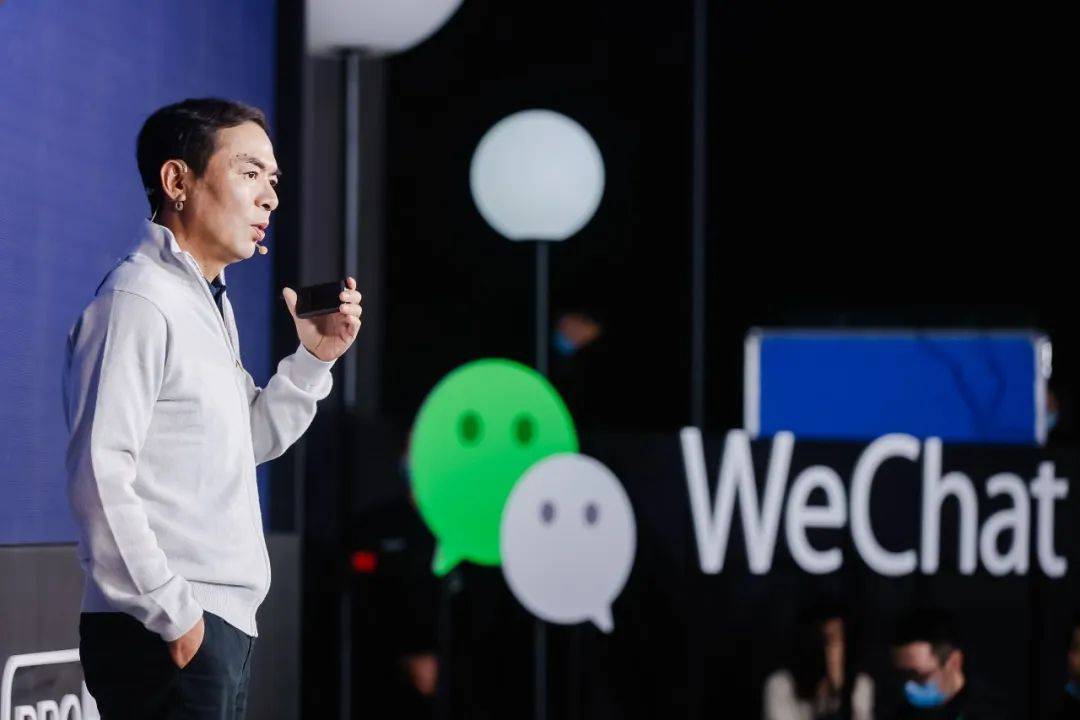 △Speech by Zhang Xiaolong, Senior Vice President of Tencent and President of WeChat Business Group Image from the internet
△Speech by Zhang Xiaolong, Senior Vice President of Tencent and President of WeChat Business Group Image from the internet
WeChat is more than just a social software; it is a super app integrating instant messaging, social media, payment tools, Mini Program platforms, and myriad other functions.
Statistics show that the monthly active users of WeChat Mini Programs have approached 950 million, accounting for over 90% of WeChat's total users. These diverse application scenarios offer ample space for the implementation of AI technology.
WeChat is deeply integrated into all facets of users' lives: hospitals across the country use service accounts for registration, schools assign homework, governments utilize it for appointments, and ordinary people pay utility bills. WeChat is also China's largest customer relationship management software, the most frequently used screenshot software, text recognition software, translation software, to-do list reminder software, collection assistant, file transfer assistant, and more.
No global application can achieve such extensive and deep connections as WeChat, the so-called "super rich second generation" in the AI era.
Unlike American users scattered across multiple platforms like Facebook, WhatsApp, and LinkedIn, Chinese users can complete social, work, business, shopping, and other diverse activities in one stop on WeChat – this concentration of scenarios and closed-loop data gives Tencent another inherent advantage in the current AI era – forming a data flywheel that continually improves with user feedback mechanisms.
Once Tencent decides to deeply embed AI capabilities within the WeChat ecosystem, the energy it unleashes will be immeasurable.
From model capabilities to product interfaces, from task agents to service agents, based on deep control over the product ecosystem, WeChat's imagination space is boundless. WeChat can drive the deep integration of AI and scenarios through a full-chain approach, forging a competitive advantage that is difficult to replicate.
Once AI capabilities are implemented in an "end-to-end" manner within the WeChat ecosystem, their reach will far exceed traditional AI products. WeChat could become the world's first super platform to deeply integrate large model capabilities into the main social scenario, truly serving the daily needs of hundreds of millions of users. From personal assistants to professional assistants, from lifestyle services to enterprise collaboration, intelligent responses based on real behavioral chains will become a reality.
Its "super portal" attribute means that once any AI capability is implemented, it will naturally possess a user base and a robust distribution network.
Years ago, when WeChat first launched Mini Programs, Lu Qi, the founder of the QiJi Forum, praised it as a brilliant invention because no one wants numerous apps on their phones; everyone desires a single portal.
In the era of generative AI, we can perhaps boldly envision a future where there is only one super portal that can connect various AI Agents and assist people in completing a series of daily tasks. This portal needs to have a low usage threshold, involve sufficient scenarios, and connect enough people. No app is more suited than WeChat.
Of course, the complexity of WeChat determines that this transformation will not occur overnight. From product security and user privacy to ecological balance and developer relationships, every step needs to strike a delicate balance between restraint and innovation. Competition in the AI realm has entered a white-hot stage. While the potential of the WeChat ecosystem is immense, it is also challenging to activate.
"For any new business that can amplify value through social relationship chains, Tencent is often the ultimate winner," commented an industry insider.
Tencent certainly harbors an ambitious AI dream, but realizing this dream requires a measured and cautious approach, given the monumental shift it implies for billions of users.
However, this gradual evolution may need to accelerate. In the era of generative AI, the pace of corporate transformation is akin to the cumulative changes of the past decade. Emerging startups are already developing AI-native social and chat applications, while technology giants are investing heavily in the next generation of AI-powered social platforms. WeChat, a hallmark product of the mobile internet era, now faces a pivotal challenge: whether its organization and team can overcome the inertia of mobile internet thinking and reimagine the next generation of WeChat with an AI-native mindset.



